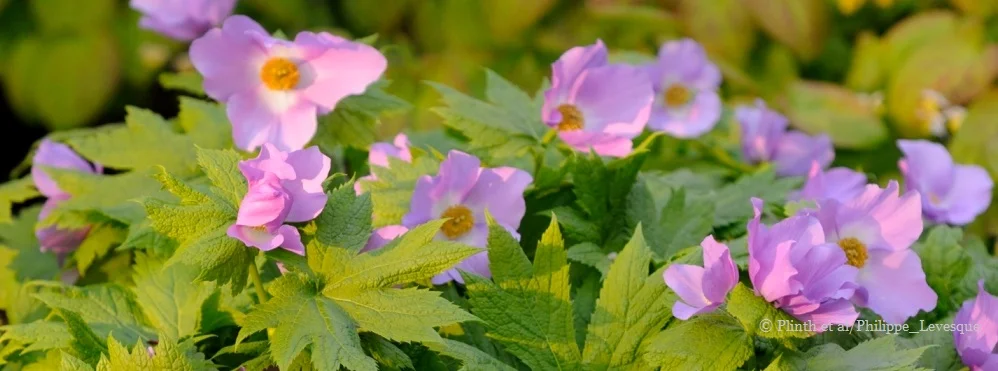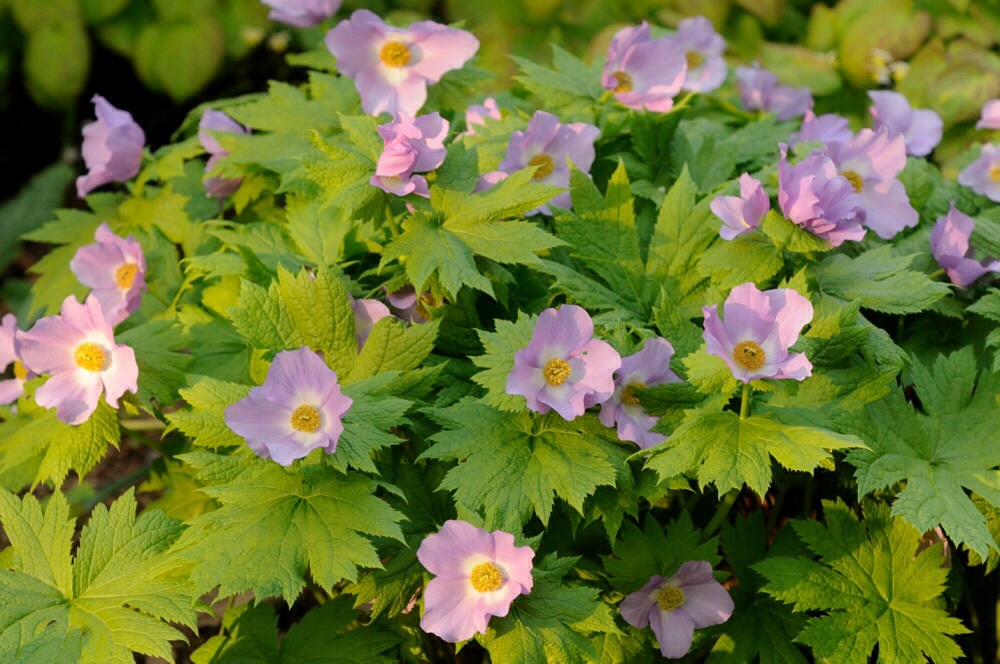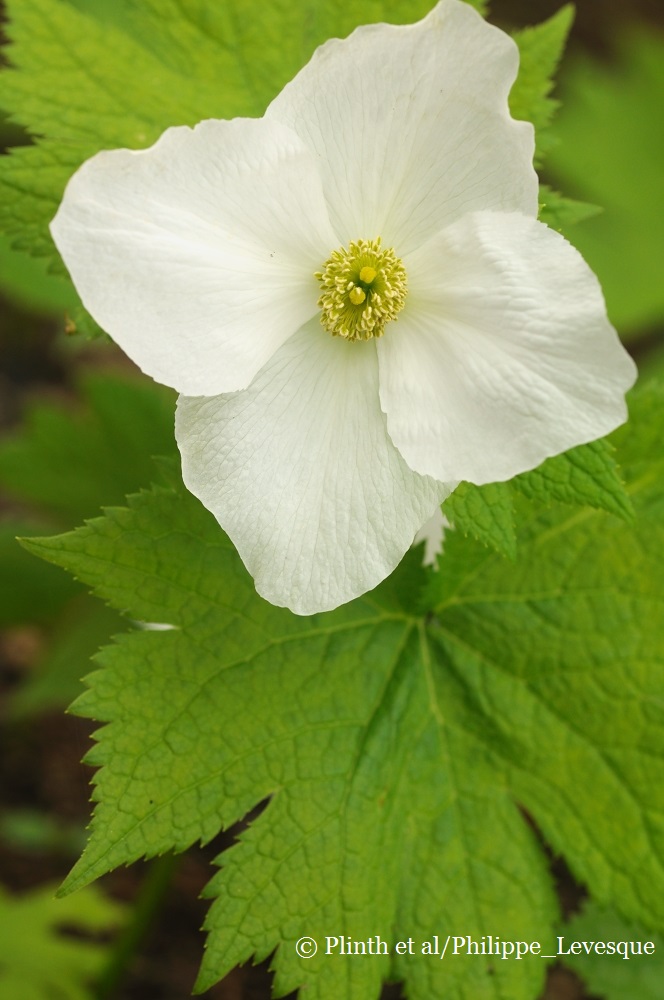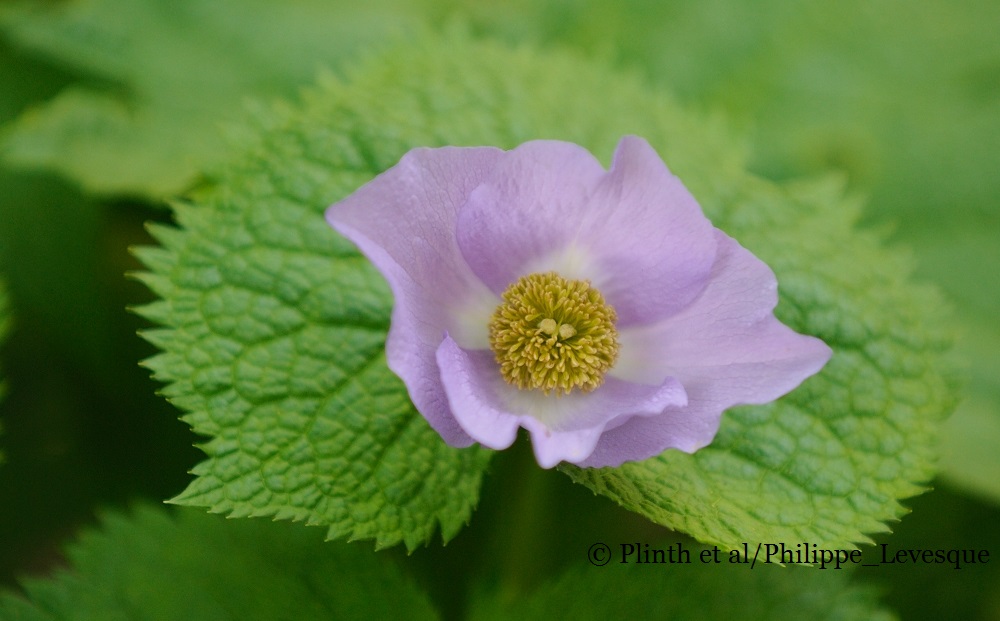Plantsman's Corner: Glaucidium palmatum
This week sees the debut of a new column Plantsman Corner, which will be penned by horticulturist and plantsman Philippe Levesque of Balmoral Gardens. Philippe gardens and manages a nursery in northern New Brunswick, Canada. The column will feature uncommon garden plants, the first of which will be Glaucidium palmatum.
If you type the name Glaucidium in a search engine on the web, you will get images of one of two delightful things : either a cute little owl or a beautiful Japanese woodland plant. Indeed, both share the same scientific name derived from the Greek glaukidion, meaning to 'gleam' or to 'glare'. And whilst the pygmy owls do have glaring eyes and are as cute as they get, today, it is of the gleaming qualities of one of the loveliest of all spring-flowering perennials that I want to talk about, the Japanese woodland poppy.
The common name of this plant, although erroneous in the botanical sense - it is a ranunculus - is evocative. Its flowers are composed of four crepe paper petals that flutter above pale green foliage like wide open shirley poppies. But unlike the promiscuous poppies that seed about with abandon, Glaucidium is a restrained woodland rarity. It is localized even in its native Japan, where it grows in a few open woodlands of Hokkaidō and Honshū. Ever earnest in their appreciation of native flora, the Japanese revere Glaucidium as shirane-aoi, meaning "hollyhock of Mount Shirane", and a Shirane-aoi wo Mamoru Kai (Shirane-aoi Conservation Group), funded by Nippon Paper Industries, was established to preserve populations from being extirpated by deer. This woodlander is very amenable to cultivation, but slow growing. It used to be extremely rare in gardens here in North America, but has become readily available from recent Japanese imports of seeds and plants.
The species is a lovely shade of mauve and there is a coveted pure white form (var. leucanthum). Pink selections are occasionally seen but are often just a washed out form of the mauve one and they lack the ethereal qualities of the other two in my opinion. Remaining so far elusive are the mythical red and double forms, no doubt lurking in one of the specialized nurseries in Japan but not yet available, to my knowledge, in the West.
Glaucidium is never cheap and never will be because its growth rate is very slow but if you are patient enough, it is not difficult to grow from seeds. These seeds should ideally be fresh from the same year. They can be allowed to dry in the oddly-shaped pods before harvesting but they should be planted the same autumn and left outside (or in the refrigerator) to vernalize over winter. If planted as such, they will germinate like cress the following spring. Older seeds might take two years to break dormancy. They are a joy to see germinating, two fat cotyledons bursting out of the ground, but then disappoint rather, since they do nothing more for a whole year. I have never managed to coax them into more growth until the following spring when they usually come up as a couple of real leaves. If fed well and one is extremely lucky, it is possible to get a first flower in the third year, but usually that only happens the fourth spring. Once planted in a suitable place, the plant establishes slowly and eventually grows into a large clump.
In the garden, Glaucidium makes a great companion to other spring woodlanders. We have it planted next to Uvularia grandiflora 'Pallida' and amongst Erythronium oregonum for a pastel display. The only downside to this last companion is that it leaves a gap when it goes dormant in summer. If you are concerned by this happening, you could plant it, as we have done with the white, in a carpet of maianthemum biflorum, a native of our woods. There is a break of colour in summer with this combination, but we don't mind this since the foliage of Glaucidium is attractive enough and its curious seed heads are comical. And we know that when autumn comes, we have Kirengeshoma palmata and Chelonopsis moschata nearby to delight us with their dangling bells.
In terms of cultivation, Glaucidium is not a difficult plant to please. Deciduous shade and a well-drained humus-rich soil is what it likes best but it's forgiving for a woodlander. The only thing one should stress that it is not a bog plant that thrives in permanently wet soils. Probably more people kill their Glaucidium through excessive watering than from neglect. It actually can take dry soil with admirable aplomb and can compete with tree roots once established. It doesn't like the heat very much, but may pull through with partial shade and cool soils. It might go dormant prematurely, but will emerge again the following spring. Successful cultivation tends to be north of Washington, D.C., U.S.A. as summer temperatures in the Southeast US are too high. Here at Balmoral Gardens, the worry is more the winter cold. Temperatures below -25C can prove lethal and so and so we protect our plants with a mulch of leaves in November, before the first snow. It is still patiently sleeping under a receding white blanket as I write this note, and it is with great anticipation that I await its joyful return in a couple of weeks' time.












